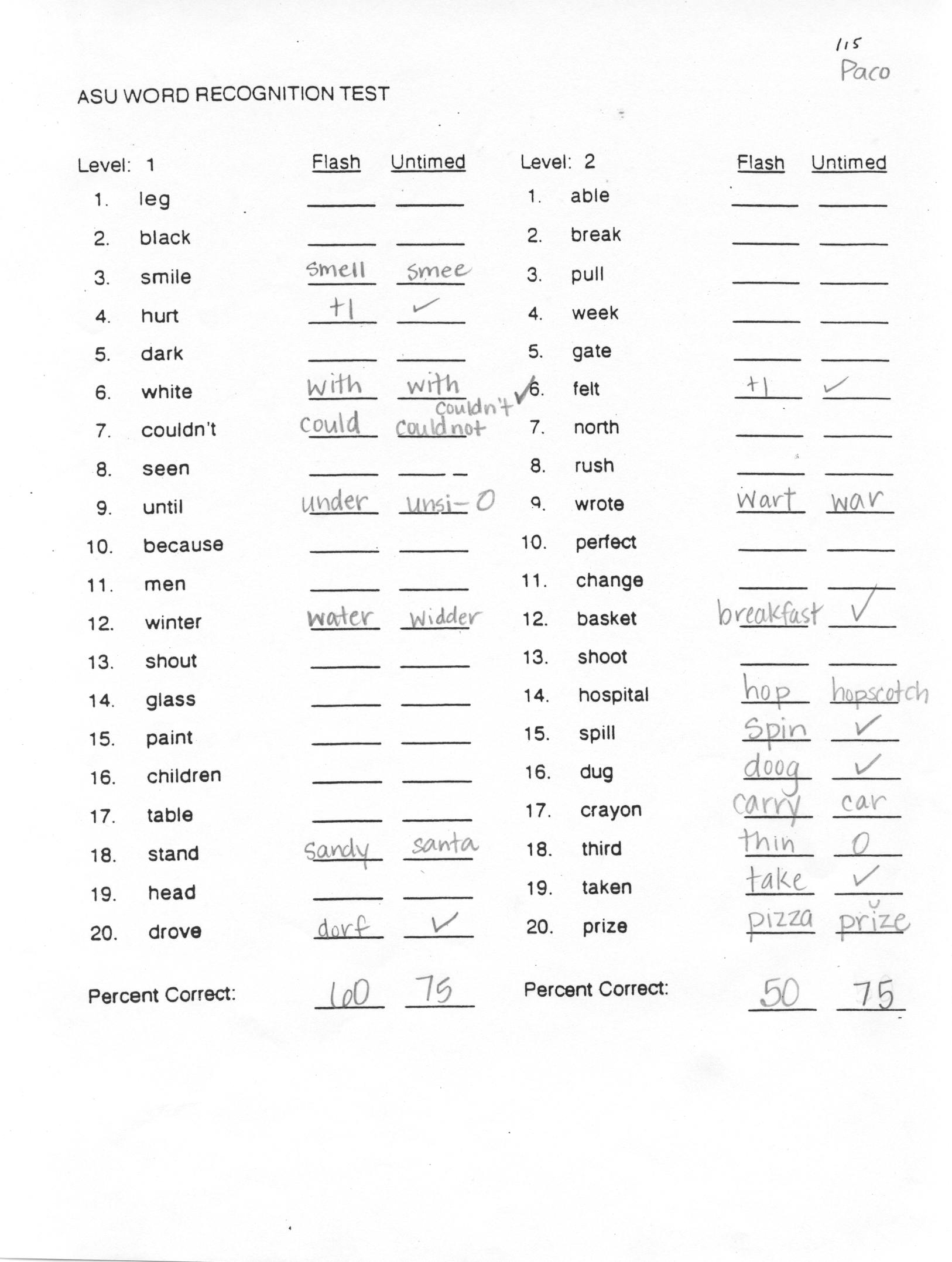
Below is an example of a Word Recognition Inventory, often referred to as a WRI. The WRI assesses a student's knowledge of words in isolation. It helps to reveal a child's automatic word recognition and decoding abilities. The "flashed" column measures automatic word recognition, and the "untimed" column measures decoding ability. The "flashed" column is also a good predictor of a child's contextual reading ability. It offers guidance as to what a child's frustrational, instructional, and independent reading levels may be.
When administering a WRI, cards are flashed to the student at approximately 1 card per 1/4-1/2 second. The student must read each word automatically for it to be counted as a correct response. On the example below, correct responses are not marked, and the lines beside the word are left blank. If a student miscalls a word, the word he says is written down on the blank beside the word in the "flash" column. The student is then given a chance to correct his mistake as the card itself is again revealed. If he correctly identifies the word, a check is placed in the "untimed" column; if he is unable to identify the word, a zero (0) is placed in the "untimed" column; and if he miscalls the word again, the word he says is written on the line in the "untimed" column. When a child hesitates in calling a word, it is counted incorrect in the "timed" column and marked with a (+1), but marked as a correct response in the "untimed" column. At times a child will miscall a word and then immediately correct himself, this is known as a self-correction. If this happens, the miscalled word is written down with a check beside it and is counted as a correct response, because the child has self-corrected his response. When a child does not give a response, the column is marked with either a zero (0) or no response (NR). If a child says that he does not know a word, the column is marked with a (DK). Each list is then scored separately for accuracy by counting the number of incorrect words, multiplying them by 5, and then subtracting from 100.

When reviewing a child's results: a "flashed" score of 90-100 indicates an independent word recognition level,
a "flashed" score of 70-85 indicates an instructional word recognition level, and
a "flashed" score of 50 and below indicates a frustrational word recognition level.
When a 20% discrepancy between the "flashed" and "untimed" scores is present, this usually means that the child has good decoding skills.